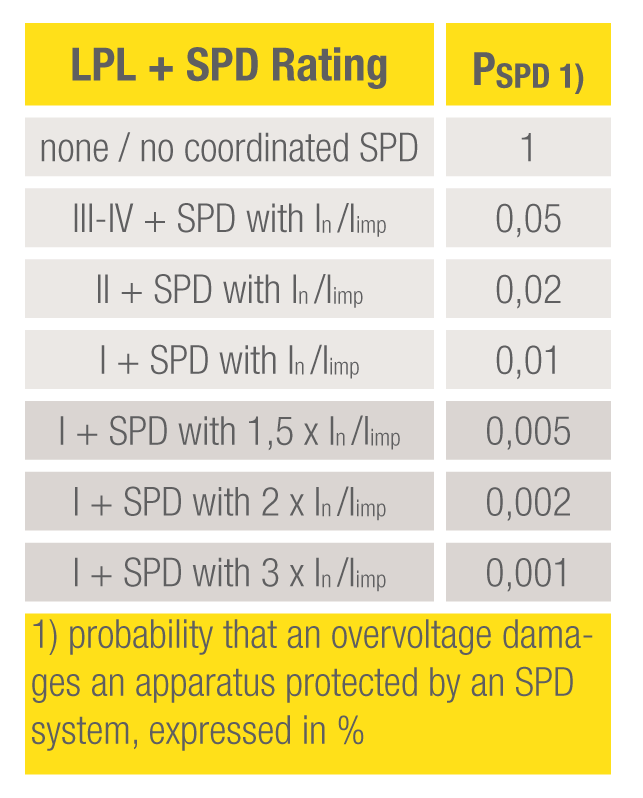LIGHTNING THREAT PARAMETERS

Lightning Protection Levels (LPLs) and SPDs discharge capability
The Standard series EN 62305 classifies a set of four Lightning Protection Levels with decreasing efficiency.
The table below briefly outlines the details and threat parameters for these levels.

- Discharge capability requirements according to EN 62305
In order to choose the correct value for the SPD discharge capability, it is necessary to determine the expected impulsecurrent at the SPDs point of installation. This value depends on the strike point of the lightning flash and on the current sharing and distribution within the structure and the electric system and wiring. The EN 62305 series of standards provides the information necessary to calculate these parameters for source of damage S1. For sources of damage S2, S3 and S4, the standard provides the values to be applied. The standard also provides appropriate information for telecommunication systems, because discharge parameters are an important factor there as well.
According to EN 62305-2 (Risk Analysis) the SPDs discharge capability is quite important and provides an indication for the overall protection level of the SPD system installed (see table beside).
In some cases, the standard recommends the choice of SPDs with very high capabilities in order to reduce the risk of explosion (increase of Iimp, In capabilities corresponding to LPL I requirements). Choosing SPDs with a high discharge capability (Iimp) is important, but it should be considered that other SPD parameters, like the protection level (Up), must be superior too then.

-
Discharge capability requirements according to HD 60364-5-534
The standard HD 60364-5-534 provides some minimum requirements regarding the discharge capability of SPDs in case of indirect lightning, but also in case of direct lightning when there is not sufficient data available to calculate the parameters based on IEC and EN 62305-2. Depending on the mode of protection, these minimum requirements are:
- For indirect lightning a nominal discharge current ln ≥ 5 kA 8/20 µs, and, when connection type CT2 is applied (3+1 or 1+1 connection), a nominal discharge current ln ≥ 20 kA 8/20 µs for the SPD mode connected N to PE in three-phase systems, and 10 kA 8/20 µs in single-phase systems. Nevertheless we recommend to use SPDs with a nominal discharge current of at least 10 kA 8/20 µs.
- For direct lightning an impulse current limp ≥ 12,5 kA 10/350 µs for LPL III and IV, and, when connection type CT2 is applied (3+1 or 1+1 connection), an impulse current limp ≥ 50 kA 10/350 µs for the SPD mode connected N to PE in three-phase systems, and 25 kA 10/350 µs in single-phase systems.

 Deutsch
Deutsch
 Français
Français
 Italiano
Italiano